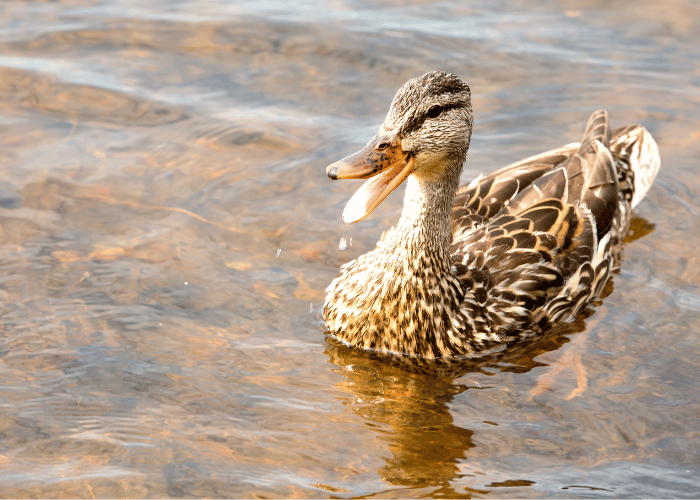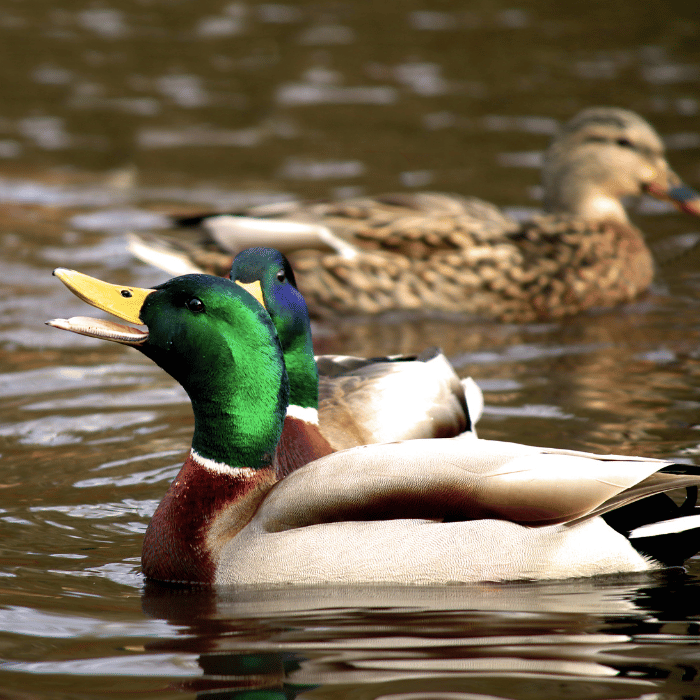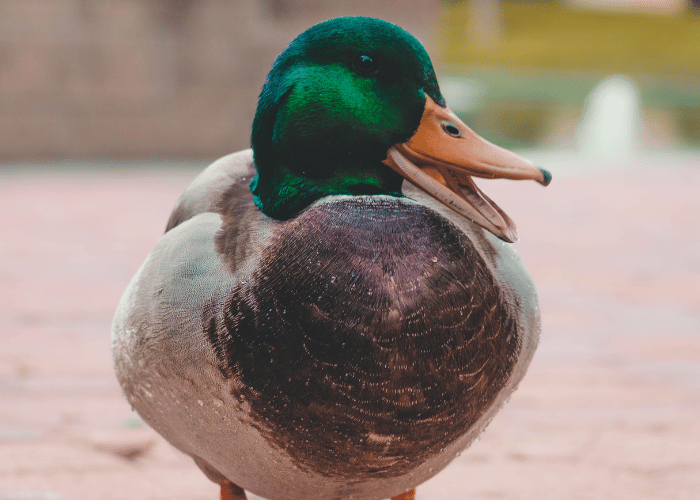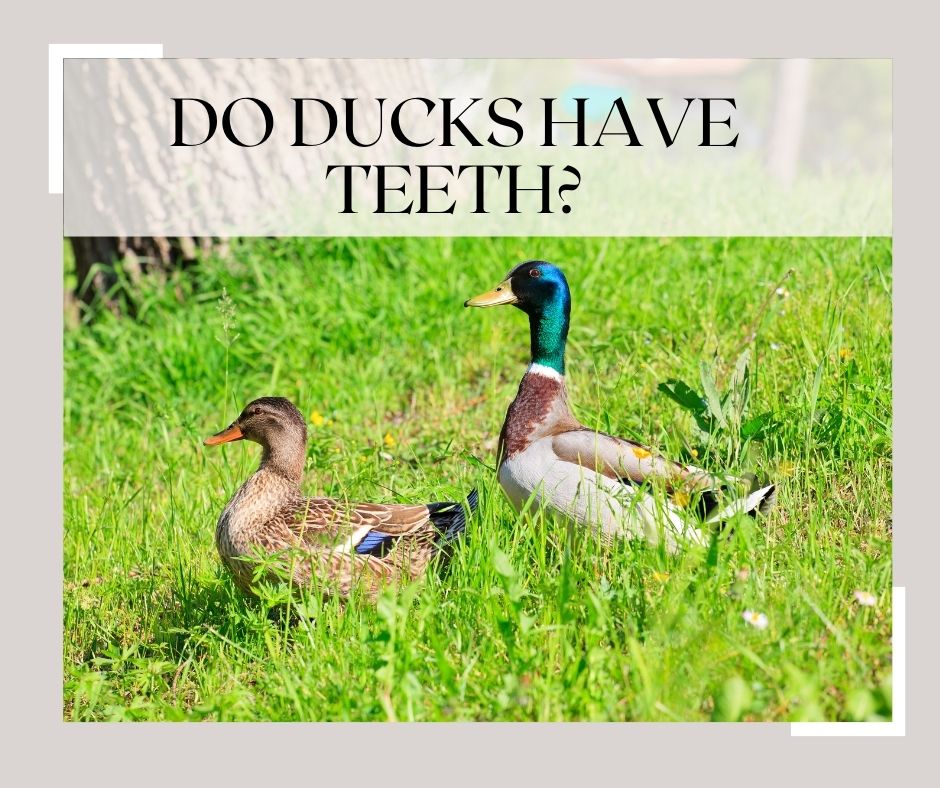Do Ducks Have Teeth
Table of Contents
So, you’ve stumbled upon one of nature’s little mysteries: Do ducks have teeth? Well, friend, it’s time for your curiosity to be satisfied! Ducks don’t have actual teeth, like we humans do. The shocking truth? They do have structures inside their bills that look like teeth and function in similar ways.
Okay, so now you’re probably wondering, “What on earth are these ‘duck teeth’?”. Picture this: tucked away inside a duck’s bill, are parallel rows of bumpy ridges, called lamellae. These are not made of enamel like our pearly whites but these comb-like structures do a swell job in helping ducks filter food particles out of the water.
The age-old myth of ducks having teeth is a pretty common one, but hey, now you’re in on the real quacking truth! And just imagine, all the dinner-time stories you can tell about a duck’s toothy deception. Your friends and family won’t know what hit ’em! You can thank us later. Let’s waddle into exploring more about these fascinating ‘duck teeth’.

What’s Behind the Duck’s Beak?
You might be asking yourself, “Do ducks have teeth?” Well, if you’re expecting the same kind of choppers you find in our mouths, you’ll be stumped. Ducks don’t have teeth like humans or dogs. But don’t let that get you down. They’re not completely without weapons in their beaks!
Ducks don’t chew their food in the same way you or your dog would. Instead, they have a unique system located inside their beaks that helps them munch. And it’s called “tomia”. Tomia are tiny, comb-like structures that line the edges of a duck’s beak. They aren’t teeth per se, but serve a similar function. Each species of ducks even has tomia of distinct shapes and sizes!
You might be wondering, how do they use these tomia? Ducks utilize these edges to sift food particles from water, filter feed, and grab onto prey. It’s marvelously efficient, when you think about it. Ducking amazing, don’t you agree?
Let’s delve a bit deeper:
- Mallard Ducks, common in many parts of the world, use their tomia to strain soft foods out of water. They’ve been observed munching on worms, small fish, and water plants.
- Peking Ducks, on the other hand, utilize their tomia like a sieve. They’ll snap their beaks shut on a mouthful of water, then open their beaks slightly, allowing water to filter out but keeping small food particles in.
Take a peek at this:
| Duck Species | Tomia Function |
|---|---|
| Mallard Duck | Strain soft foods out of water |
| Peking Duck | Act like a sieve |
That’s your peek behind the duck’s beak for you! Better brush up on yours before your next showdown with a duck. Remember, they may not have teeth in the traditional sense, but those tomia are a force to be reckoned with. So, next time you see a duck dabbling in the water or chomping down its food, you’ll know what’s actually happening behind that beak!
Anatomy of a Duck’s Mouth
Whether you’ve ever gotten up close and personal with a duck or not, you might be wondering, “Do ducks have teeth?” Well, not quite! Let’s get to the heart of the matter, shall we?
Now, if you’ve ever had a peek into a duck’s bill, it may appear as if they have rows of tiny teeth. These aren’t teeth in the way we know them, but they’re just as significant for our feathered friends. They’re known as ‘Lamellae’, working like a comb to help ducks sift through water and mud for tasty morsels.
Ducks have a varying number of these lamellae based on what they eat. For instance, a Mallard will have about 180-360 lamellae, utilizing them to sieve through water for small aquatic life.
| Duck Species | Estimated Number of Lamellae |
|---|---|
| Mallard | 180-360 |
Here’s what’s fascinating! The structure inside a duck’s bill isn’t just for dinner. These lamellae also play a critical role in the preening process, when ducks smooth their feathers to keep them waterproof.
And hey, did you know their tongues have a similar texture? Yep, the hard ridges on a duck’s tongue also align with the lamellae to help ‘catch’ and hold onto the food.
Let’s remember, ducks aren’t the type to chew their food. That’s why they’ve got something called a ‘gizzard’. After the food goes down the hatch, it winds up in the gizzard, a muscular part of a duck’s stomach. Here, it gets crushed and ground, so a duck’s actual digestion can be kick-started.
So there it is, the whole quack about a duck’s mouth. It’s no ‘bill’iant marvel of nature, with no teeth to brag about, but it sure is designed to perfection for what they need!

The Truth About Duck Teeth
Okay, let’s dive right in. Ever watched those cute little ducks at the park or pond and wondered if they have teeth? Spoiler alert! They don’t. But wait, don’t let that gap-toothed smile fool you. Their beaks hide an interesting feature which is designed to help them eat.
Ducks and other birds press their food using tiny, tooth-like projections, called serrations rather than actually chewing with teeth. These serrations are sharp enough to help them catch and hold onto slippery food, like a fish or a feisty worm!
You might want to get a closer look next time you come across a friendly duck. Beneath that listless bill, instead of teeth, ducks have these that varies in shape and size depending on species.
| Species | Serration Shape |
|---|---|
| Mallard | Fine and Comb-like |
| Pintail | Coarse and Jagged |
| Teal | Small and Rounded |
Ducks do have a proper diet to maintain, after all. Here’s a breakdown of their food habits:
- They love seeds, grains, grasses, slugs, snails, and aquatic plant parts.
- Some ducks are also known to enjoy a fishy meal or two.
- They depend largely on the gizzards (a part of their stomach) to grind down and process their food.
Ever tried eating your cereal without milk? Not the best experience, right? The same goes for our feathered friends. Ducks love splashing their food into the water before taking a bite. This helps them ‘wet’ their meal, making it easier to swallow and enjoy.
In a nutshell, ducks might not have teeth in the traditional sense, but their beaks sure pack a punch! Ready to impress your friends with your newfound duck knowledge? So, next time someone asks, “Do ducks have teeth?” You’ve got the answer. It’s not just a simple ‘no’, it’s a ‘no, but…’.
Debunking Myths About Ducks
Have you ever looked a duck straight in the beak and wondered “do ducks have teeth?” You’re not alone! Let’s cut through the quack and debunk some of the common myths and misconceptions surrounding these waterfowl buddies.
First up, the big question: Do ducks have teeth? The surprising truth is, technically, they don’t! They don’t sport a set of pearly whites like we humans do. Instead, they’ve got something else. You might’ve noticed these tiny serrated edges lining their bills– they’re called “tomia.” So while it might appear like ducks have teeth, they don’t really. These bill teeth help them grip their food, not chew it.
Now, you could be wondering, “why the deception?” Well, just put yourself in their webby shoes for a moment. Ducks need these bill teeth to nab insects, larvae, small fish, and grains, which make up a major part of their diet. With these pseudo teeth, they don’t need any utensils!
Next on the list of duck tales: Do ducks quack? You’ve no doubt heard the familiar “quack, quack” sound associated with ducks, right? But, hold on to your feathers– not all duck species quack. Only the female mallards truly quack loudly. Other species have a range of diverse calls like whistles, coos, grunts, and even squeaks!
Lastly, we’re sinking our tomia into the rumor: “Do ducks’ quacks echo?” There’s a surprisingly popular myth that a duck’s quack doesn’t echo–totally false! All sounds, including quacks, echo if there’s something for the sound to bounce off, like a wall or a mountain. But, duck quacks are quiet and get lost in the mix. So no, they’re not defying the laws of physics!
So, there you have it! You’re now armed with the facts to bust some of the most common myths about our feathered friends, the ducks. Remember, they don’t have teeth, not all ducks quack, and yes, their quacks do echo. Let’s spread the word and keep these misconceptions as rare as…well, duck’s teeth!
How Ducks Use Their Beak
Ever wondered how ducks utilize their beaks? Well, you’re about to be enlightened! Ducks, unlike many mammals, don’t have traditional teeth. Instead, they’ve got something super special going on.
Their ‘bill’, as it’s commonly called, has sort of tooth-like structures. These aren’t ‘teeth’, per say, but they often get mistaken for them. These serrations, scientifically termed as ‘tomia’, help them sieve through the water, trapping their food while letting water flow out. Handy, isn’t it?
Now, let’s take a deeper plunge. Ducks are often spotted dabbling, right? They plunge their beaks into the water, moving it side to side. But what are they really up to? They are, in actuality, filtering out morsels of food with their beak.
Leafy veggies, insects, small fish – you name it and it’s likely part of a duck’s diet. Their unique bill design allows them to pick up, crush, and swallow all sorts of grub sizes. That’s versatility for you!
You might also spot a small hook at the end of some duck bills. This is a nifty tool used for preening and sorting out feathers. A real multitasker!
| Duck Beak Key Features | Functions |
|---|---|
| Tomia | Filtering food |
| Hook | Preening & arranging feathers |
So next time you see a duck in action, you’ll know the behind-the-scenes of their beak business. And remember, those aren’t teeth in there, those are tomia – a duck’s best companion for survival!

Wrapping Things Up: Duck Teeth Facts
So, you made it! We’ve explored the intriguing world of duck anatomy in detail. It’s been a wild ride through duck bills, right? The final fact to keep in mind is that despite those fancy serrations, ducks don’t technically have teeth. These bill serrations thought to resemble teeth are called “tomia”.
These tomia are handy tools designed by Mother Nature. Ducks use them like a built-in fork and knife. They’re perfect for filtering out water while retaining little tidbits of food. When it comes to the crunch, these tomia can’t chew or grind food like our human molars do. Ducks swallow their food whole or in large chunks, bypassing the need for actual teeth.
Now, let’s organize some key facts for you:
- The bill serrations of a duck are not teeth but they function similarly.
- These serrations are referred to as tomia.
- Ducks do not chew their food; they swallow it whole or in large chunks.
Moreover, the number of serrations can vary significantly. Some ducks have just a few while others possess up to hundreds of tiny tomia!
To add a little fun fact about our favourite quacks before we wrap up: the Harlequin duck – a pretty fascinating species – even has tomia that are uniquely shaped to help it latch onto slippery prey. Ducks may not have teeth like you and I, but they’ve sure got an amazing set of tools built right into their bills.
Doesn’t all this duck trivia give you a newfound appreciation for our feathered friends? There’s always more to learn, no matter how simple something may seem at first glance! Don’t underestimate the power of curiosity. Keep asking questions and who knows, you might be the next one to discover something amazing about the natural world!






